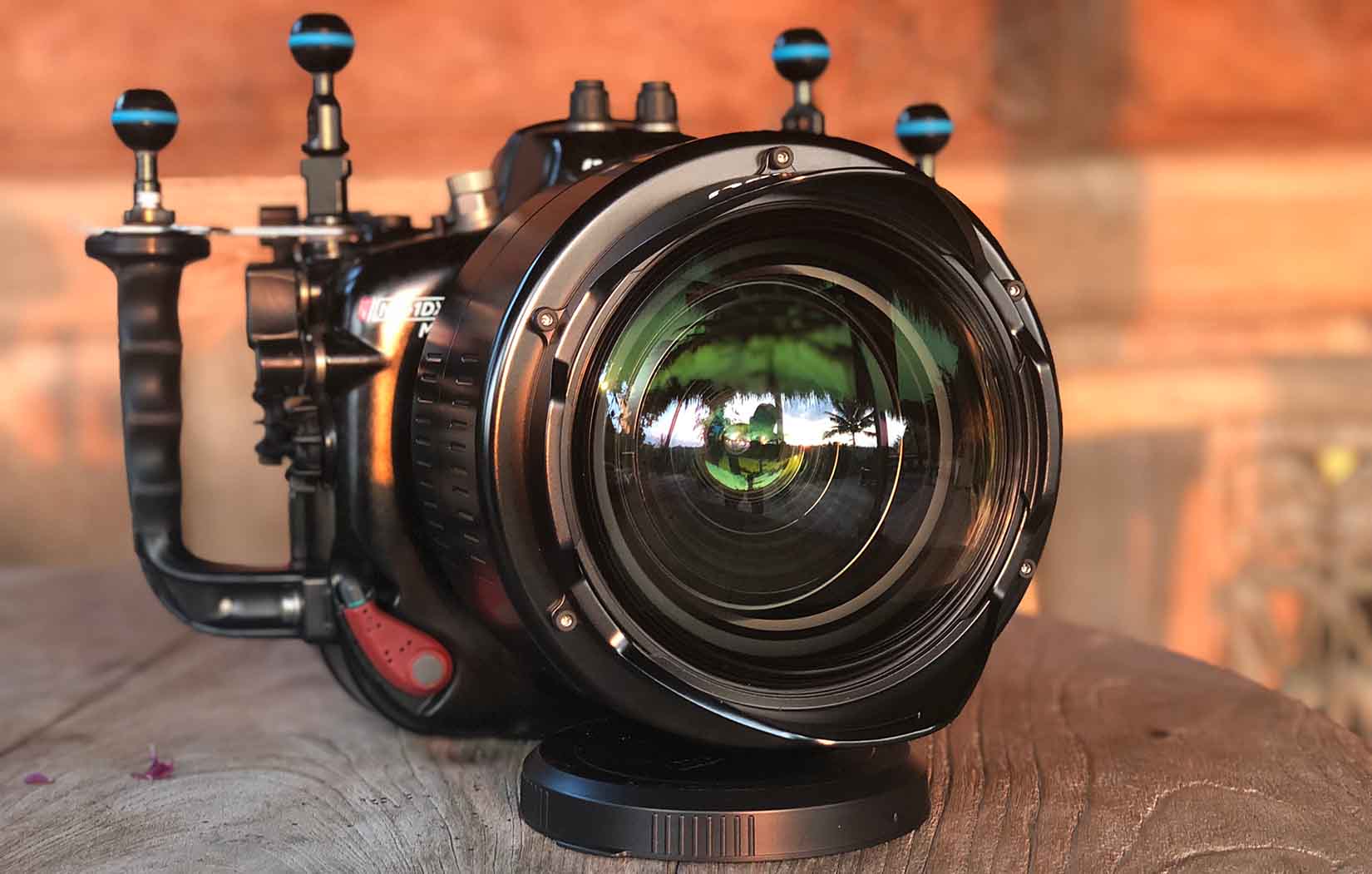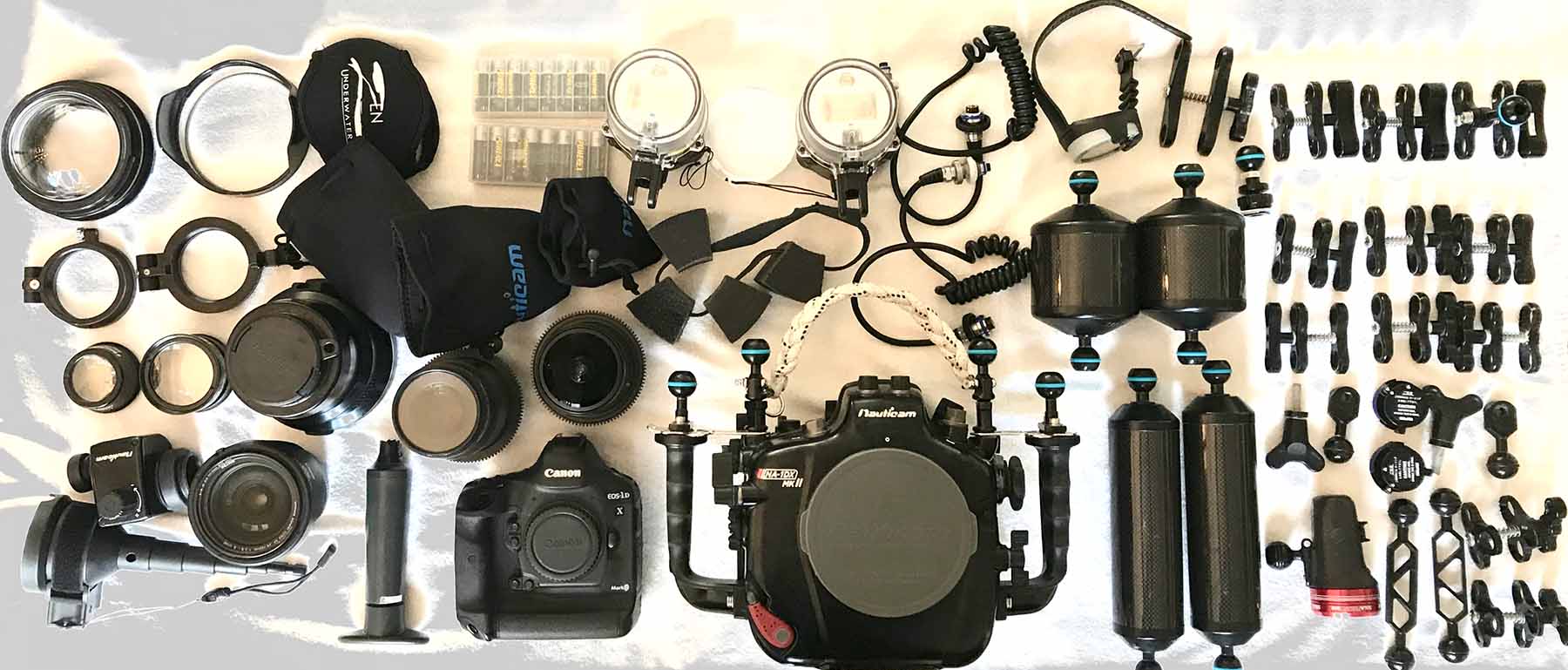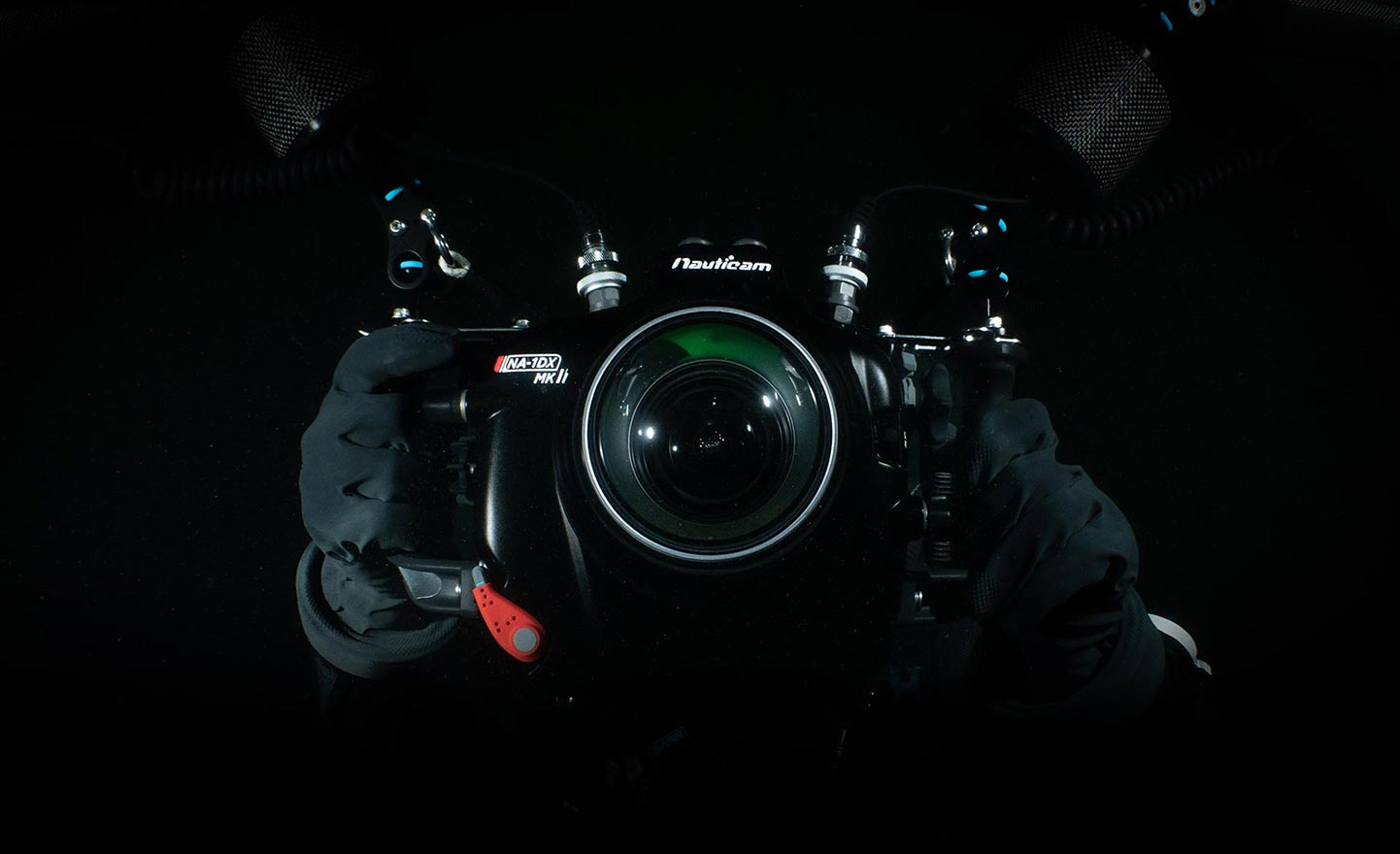
Understanding how to choose the best underwater photography equipment for your needs can be very simple.
Miles has owned several sets of underwater photography equipment and housings in his time, including housing from Ikelite (Sony TRV480 + Olympus Point and shoot), Amphibico (from my Sony TRV 950), Light and Motion (First Sony HDV), Aquatica (for my 5DMKII.). Most recently, he shoots with a Canon 1DX MKII in a Nauticam Housing with Dual Retra Strobes. Each system cost about 2x the previous. Miles is always interested to see how underwater imaging manufacturers re-invent themselves. Underwater imaging, as we know, is a small niche market, and as technology changes, it provides us with new ways of capturing images underwater. So here are some pointers when it comes time to buy that underwater housing.
#1 Materials, Cost, & Batteries
Cost is always the most significant factor in purchasing underwater equipment, especially underwater housings. Make sure when you are looking at an underwater photography housing, you understand where you will use it and what accessories you will need. The second will be the materials and electronic components. A solid polypropylene housing vs solid machined aluminum, analog vs electronic components? Electronic components offer easier access but can fail, leaving you without a vital feature such as white balance. Most DSLR housings are the body only. You still need to buy wide or macro ports, which will set you back anywhere from $500 -$5000 USD each. Consider the Nauticam WACP MKI and MKII these are incredibly expensive and heavy lenses and offer the best image quality you can find. Also strobes; how many, how much power do you need? Do you dive in darker or cold water conditions? You may need a focus light and lots of extra batteries. Remember, cold water limits your underwater burn time and battery life. I have strobes that take 4 AAs each, which means I need at least 16 rechargeable batteries for a day of diving.
If you dive with equipment that takes AA’s, it may be more manageable than diving with strobes or lights with built-in rechargeable packs. If this is the case, you will need two or enough time between dives to charge your gear. The best example is if you wanted to buy a Sea&Sea YS 250 vs a Sea&Sea YS 110α strobe. The YS 250 battery will last slightly longer underwater and has a much higher flash output with a land guide rating of 32 vs the YS 110α, which has a land guide rating of 22, but may not last 2, 3 or 4 dives. Also, consider the conditions do you dive in? When you dive in places like the Galapagos, you have heavy currents. Large wide dome ports and equipment create a large amount of drag in the water. If you purchase underwater photography equipment without protective domes can get scratched or broken in more challenging conditions.

#2 Portability, Size & Weight
Do you want to buy a larger DSLR housing with multiple strobes so you can truly create the shadows and lighting you want underwater? I have a Pelican case just for my Underwater housing and accessories, and it weighs 49.6 lbs – So no extra airline charges and everything is protected. But this also means that you have to figure out how to bring all your dive gear, clothes and accessories in another bag and keep it under 50lbs, or you get charged overage fees or extra bag fees at the airport when flying from North America to International destinations. Miles’ wife dives with a Canon G10 point and shoots with one strobe. She can easily pack this in her carry-on pelican roller within the dimension limits on most domestic and international flights. The tricky is the weight. Her housing with the pelican case can weigh up to 32lbs, so if they weigh it, they may ask to have it gate checked. The good news is your gear is still in a bulletproof case.
The other consideration with gear is whether or not you want it to be recognizable. Alex Mustard, the famous underwater photographer and marine biologist, suggests that his students pack underwater photography equipment in bubble wrap and put it into regular hard-sided luggage. This way, it will be less appealing to thieves. Miles has always travelled with his equipment in Pelican cases, and only once has it been delayed. *Travel Tip* Miles always stays somewhere for a few days before the diving portion of a trip. This way, if there is a 24-48hr delay (most often because someone left a larger lithium battery in checked luggage), You still have your equipment in time for when you hit the liveaboard or scuba diving portion of your vacation. If you are traveling to remote areas, likes Miles’ favourite destination Raja Ampat having a few days ahead of time to relax and acclimatize can take a lot of the stress out of dive travel.

#3 Versatility and put the best camera you can afford in your underwater housing
The hardest decision for an underwater photographer is when to buy and for what camera. Miles had a Canon 40D, but when he knew that he would drop $2,500 USD on underwater photography housing, why not consider housing the best camera he could afford at the time. So he invested and bought a 5D MK II. He never regretted this decision—for example, a Canon R5 vs Canon 5DMK IV. The former is newer, has significantly better specs and is more recent. It will also provide greater resale value if you decide to sell your camera housing within the next three years.
The other thing to consider with underwater photography equipment is versatility. With specialized lenses, wide-angle and macro ports, you are often choosing what you want to shoot before the dive based on the recommendations of the dive resort staff. There have been several new innovative advancements from Nauticam that allow for macro and wide shooting underwater in the past few years. The ability to change “wet lenses” underwater or new specialty lenses, including the Wide Macro Lens (WML.) With today’s innovative advancements, you can genuinely have underwater versatility if you want.

#4 Protect & Insure Your Gear
This is simple, buy a Pelican case or other hard-sided case to protect your and buy insurance. If you have to check your gear, remember most airlines insurance runs out at $500, so insure it through your house insurance, DAN or other. Also, make sure you have a tether system that does not compromise your underwater safety, but also allows you to discard but not lose your equipment. Additionally, your equipment should be set to neutrally buoyant in the water as discussed in the next section, but on land they are often heavy and awkward. Leveraging carrying handles and lanyards is important to reduce the chances of equipment scratching lenses or damaging one another.

#5 Buoyancy
You can purchase underwater housing accessories to help with the buoyancy of your camera gear so it is less negative in the water. Miles likes his equipment to be slightly negative; if it is too negative, your hands and forearms will be sore from holding the camera; if it is too positive, it will be pulling you to the surface the whole dive, which is equally frustrating. It was positively buoyant when Miles did his first dive with a Nauticam WACP lens, weighing almost 12 lbs out of the water, but underwater it was almost 3lbs positive with his regular carbon fibre floats.
Be sure you test your equipment in a controlled area like a shallow shoreline. Equipment drag or buoyancy issues will dramatically reduce your bottom time.
As an underwater photographer, you are always looking to master your underwater buoyancy. Remember to respect the underwater world, don’t dislodge or abuse marine animals to get the shot and make sure you are aware of your surroundings. Floating into a Lion Fish or losing sight of your buddy are everyday occurrences for underwater imagers. Underwater photographers are considered the worst buddies. Make sure to check on your buddy, share the reef, and don’t forget the basics. Happy Picture taking!
